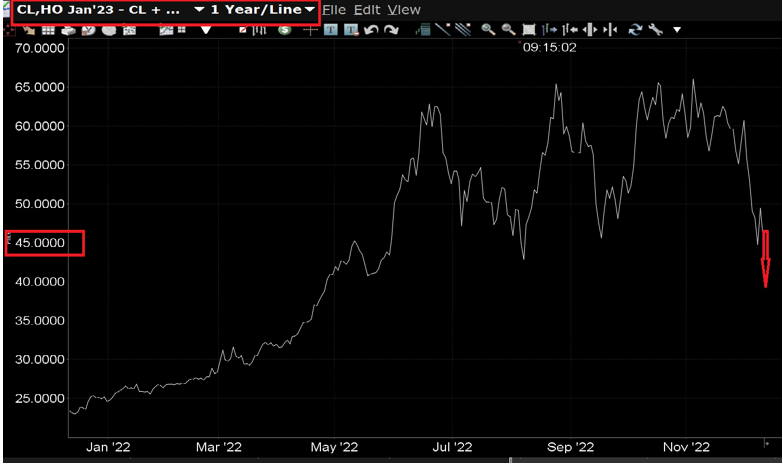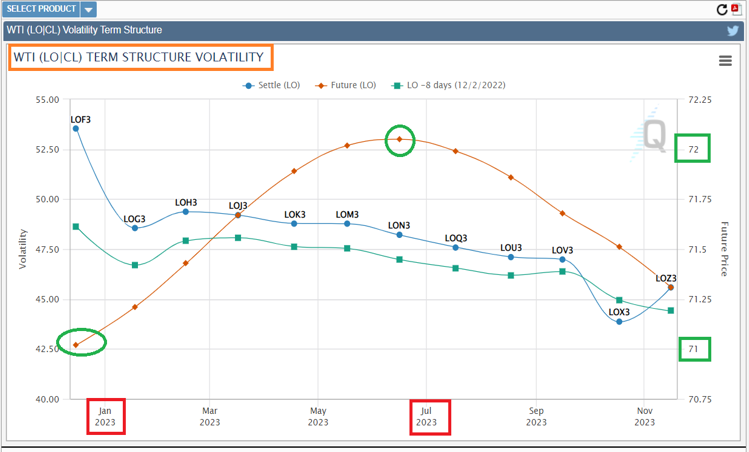On December 9th, the lowest trading price of the main contract of crude oil (WTI) futures owned by Chicago Mercantile Exchange was US $70.08, which was the biggest decline of US crude oil in a week since April this year and the lowest price since the high price of US $130 was created in February this year.
Since February this year, after the US crude oil price exceeded US $130, I have repeatedly stressed that US $130 is the highest price of US crude oil this year. Since then, the US crude oil price will slowly drop to around US $65.
Medium and long-term investors should pay attention to: diesel price and premium status
The US crude oil price on December 9th is very close to the personal crude oil buying price target. Now, with a tentative small investment in crude oil, medium and long-term investors and traders should pay attention to the following two issues:
First, due to the increasing inventory, the price of ultra-low sulfur diesel (HO) still has room to fall, that is to say, the cracking price difference of ultra-low sulfur diesel still has room to narrow. Please see the following figure. The decline in diesel prices will more or less give downward pressure or temporary upward resistance to crude oil prices.
Second: Between the spot crude oil and the futures in July next year, there is already a premium state. Please see the red line in the following figure. Although it is only a premium of $1, for crude oil bulls, moving positions every month is more or less a loss. The solution is to buy futures directly in July next year, because this is the peak of oil consumption in summer.
There are many ways to invest and trade in the bull market of crude oil futures options, such as buying futures directly, buying call options, selling put options or making bull market spreads, proportional call option spreads and so on.
The macro conditions for the rapid reversal and rise of crude oil are not yet mature
Under the current special circumstances, individuals tend to sell short-term or medium-term put options.
The reason for this is that although crude oil has entered the buying price range, the macro conditions for rapid reversal and rise are not yet ripe. While waiting, time itself is money, and selling put options can earn time value without losing extra income brought by price increase.
Chicago Mercantile Exchange's crude oil (CL) and refined oil derivatives markets are the largest crude oil derivatives markets in the world, offering two kinds of crude oil options, the first is crude oil standard options, and the second is crude oil ultra-short-term options, namely Weekly options.
What the above two options have in common is: 1. They are all American options; 2. They are all spot handover and settled into WTI crude oil futures contracts. The difference between standard options and weekly options is that the expiration date of standard options is the first three days before the expiration date of corresponding futures, while the expiration date of weekly options is every Friday (LO 1-5).
So what are the benefits of trading weekly options? The biggest advantage is that the time is short, so the insurance premium price is relatively cheap. In other words, WTI weekly options can effectively and flexibly manage short-term market fluctuations and risks without increasing insurance premiums.
$E-mini Nasdaq 100 - main 2303(NQmain)$ $E-mini Dow Jones - main 2303(YMmain)$ $E-mini S&P 500 - main 2303(ESmain)$ $Gold - main 2302(GCmain)$ $Light Crude Oil - main 2301(CLmain)$


Comments